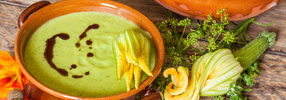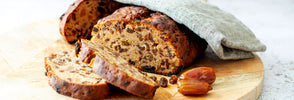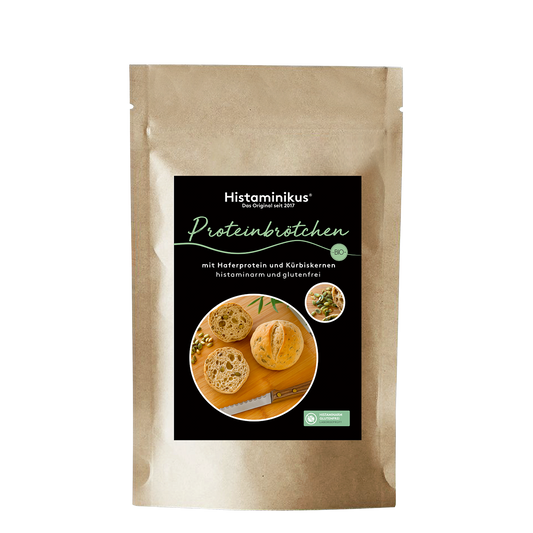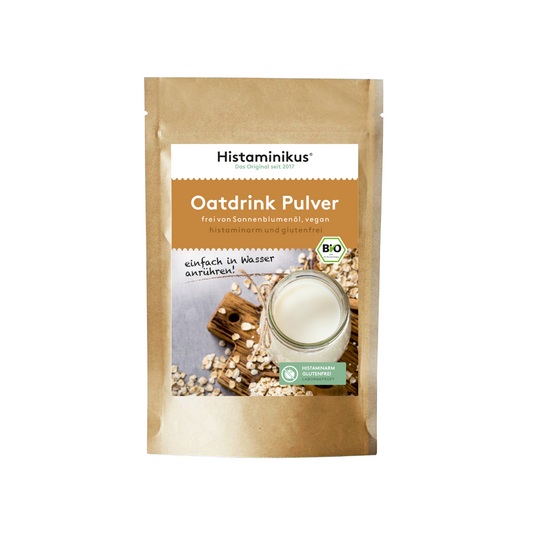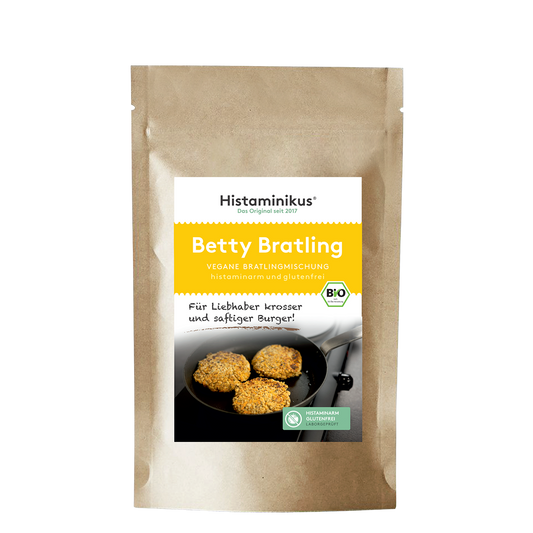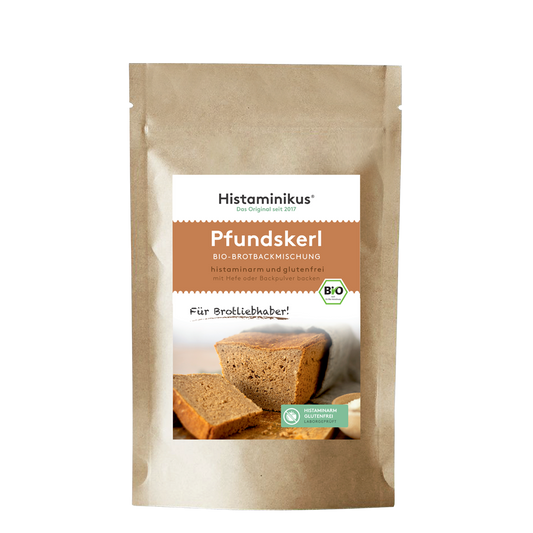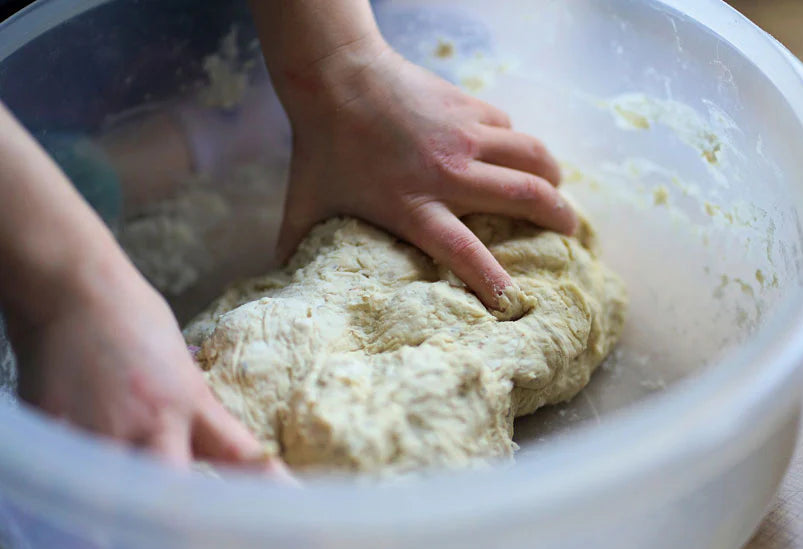
Is yeast to be compatible with histamine intolerance?
The question of whether yeast is compatible with histamine intolerance or not is very controversial on the Internet. That is why we have researched and came across the baked goods specialist Resch & Frisch in Austria. Resch & Frisch GmbH dealt intensively with this topic and commissioned a diploma thesis at the HTL for food technology in Wels in 2012.
The HTL study in Wels
The subject of this diploma thesis was the histamine content in baked goods. The company Resch & Frisch was so friendly to release this diploma thesis for us so that we could take an insight into it. The aim of the diploma thesis was to find out how high the histamine content is in individual baked goods and whether the time and production process have an impact on the histamine content. Samples of individual baking ingredients - as well as the bake yeast - as well as samples on various production levels during the baking process were taken.
The results of the study
The investigations clearly showed that the analyzed yeast products are free of histamine or the histamine content was below the detection limit. The study also Unusually long storage times The yeast products taken into account. But even After a long storage, the histamine content was still below the detection limit.
But we weren't at the end of our research. Of the "Experimental institute of the Hefer industry (VH Berlin) e.V / Research Institute for Baker's Yeast" we also got a dossier available. With this dossier, the institute clearly refutes the misinformation based on scientific research results that yeast is histamine. This assertion can be demonstrated neither analytically nor theoretically. Here, too, the studies showed that baking yeast does not contain histamine.
Histiding content in bake yeast
The dossier also refers to the Histiding content in bake yeast. Histamine is created as a waste product of the amino acid Histidin. Hefe contains approx. 3% histidine. The enzyme histidine decarboxylase is required to convert histidine into histamine. However, this enzyme has not been detected in bake yeasts.
So: no enzyme, no conversion of histidine into histamine. Even the rising time of baked goods does not matter.
Where does the statement come from that yeast is histamine?
This information is based on one Article by B. Blackwell, L.A. Mabbit & E. Marley from 1969. The histamine content of different yeast extracts (Which is something other than baking yeast again), e.g. the spread "Marmite". At that time, a histamine content was found in the yeast extracts of 0.1-1.6mg/g. The fluctuations were attributed to the different types of production of the yeast extracts. The Authors also pointed out that they have used contaminated brewery waste yields as samples by bacteria. Through the Contamination was converted into histamine in the yeast extract. So this result came about.
In the meantime, the yeast production technologies and systems have extremely changed. Especially in Germany and in the EU Production systems are the strictest quality and hygiene regulations, the one Contamination of yeast Through other bacteria almost exclude. And even if yeast is contaminated, we would immediately determine this due to the smell, the color and the changed consistency and no longer use this yeast.
Conclusion
Back yeast does not contain histamine. Several independent studies have proven this. Histidin is part of the yeast protein and arises when the yeast dough opens, but is not converted into histamine, since the corresponding conversion enzyme itself is missing in the baking yeast itself.
As the person concerned, there is a histamine intolerance to consider some things when choosing the yeast. Under the point "Still problems with yeast"? we explained this in detail.
The conventional fresh yeast cubes is best suited for histamine intolerance.
Excursus: what is yeast actually?
Yeast is one naturally occurring single mushroomthat is not recognizable with the naked eye. From these mushrooms, beer, wine and baking leaks are bred, in which they are increased via a fermentation process. For the production of conventional bake yeast Molasses (sugar beet) used as a nutrient medium, which consists of 50% sugar. More Nutrients are artificially added to the yeast. The yeast converts them entirely into protein and nucleic acids. So they are no longer available in the ready -to -use yeast. Back yeasts (fresh and dry yeast) consist exclusively of pure yeast cells and become in the EU does not change genetically.
Hefe cells consist of 65-70% water and are rich in protein, fiber and minerals. In addition, it contains yeast Large amounts of vitamins of the B complex as well as essential amino acids and trace elements. Hefe is also used in medicine as a medicine for digestion and skin (medical yeast).
The baking yeast belongs to the genus Saccharomyes Cerevisiae. These yeast tribes belong To the low SO2 producers (Sulfur producers). During fermentation, these yeast strains can produce up to a maximum of 20mg/l sulfur dioxide. However, this varies from yeast stem to yeast stem. If you are sensitive to sulfur, you could try to try different types of yeast.
DANGER: The Dry yeast is often a Emulsifier Added so that the dry yeast dissolves better in the dough. As an emulsifier, either Citronic acid ester From mono- and diglycerides of food acids or Sorbitan monostatarat used. In the case of histamine intolerance, care should be taken to avoid the emulsifier citronic acid ester. This is excluded by using fresh yeast.
What happens when the yeast opens (fermentation)
If the baking yeast gets heat and sugar it becomes active, the metabolism becomes faster and the yeast forms ethanol and loosening gases (carbon dioxide). The carbon dioxide ensures that the dough opens nicely and is loose. The alcohol dies completely and evaporates during the baking process. As already mentioned above, no histamine arises during the time, since the baked yeast lacks the enzyme, the Histidine converts into histamine.
Organic yeast as an alternative?
The organic reference is made more gentle and environmentally friendly than the conventional yeast. The manufacturing process is very different: the breeding ground is not molasses from the sugar beet, but Wheat or wheat germ. Bow's yeast is added to fermentation and the yeast is used with the help of Sunflower oil defined. Everyone has to test whether the biohefe is really suitable for those affected by histamine intolerance. Sunflower oil and wheat are very often problematic with histamine intolerance.
Organic baking mixes & Co
-
Protein rolls organic
Regular price €7,99 EURRegular priceUnit price 18,58€ / per kg -
Oatdrink powder bio
Regular price €8,99 EURRegular priceUnit price 44,95€ / per kg -
Betty Bratling organic
Vegan brats mixture
Regular price €4,99 EURRegular priceUnit price 28,03€ / per kg -
Pfundskerl organic
Dark bread baking mixture
Regular price €7,49 EURRegular priceUnit price 14,00€ / per kg
Still problems with yeast?
Nevertheless, there are always people who have problems with yeast. As this report shows, has but nothing to do with the histamine content in the yeast, rather Other causes are the reason for this:
1. Fresh and other ingredients of the bakedware
You always have problems with yeast bakery, "Can this be due to the freshness of the bakedware, the wheat or gluten content or on other gastrointestinal diseases", the German allergy and asthmabund say. If the bakedware contains ingredients that transform histidine into histamine, the histidine is also converted into histamine in the yeast. So baked goods can quickly become incompatible. It is important to ensure that the bakedware contains histamine and histidinary meat grain.
2. Hefe intolerance
But there can also be simply a yeast intolerance, which in turn nothing to do with histamine intolerance has. Due to the histamine intolerance, the Dutch weakened and the Darmflora often not in balance. Therefore, histamine intolerance can also promote other food intolerances, such as yeast intolerance.
3. Sulfur intolerance
A yeast intolerance can also be attributed to sulfur intolerance. The baking yeast is one of the Low sulfur dioxide producers, but in people who are sensitive to sulfur, yeast can cause symptoms.
4. Attention dry yeast
As already mentioned, the Dry yeast as an emulsifier often added to citric acid ester. Citronic acid is made from mold and is histamine containing histamine. This can also be Intolerance reactions lead. If you react to dry yeast, the conventional fresh yeast would be an alternative.
5. Bio-yeast
Organic yeast is produced with wheat, wheat germ and sunflower oil. Gluten (wheat) is often not tolerated in the event of histamine intolerance. Wheat germs are considered to be highly histamine as well as as Liberator And contain other biogenic amines. Sunflower oil is just as histamine -containing and can have inflammatory effects. If organic yeast is not tolerated, it would be a solution to use conventional fresh yeast.
Yeast is not the same as a yeast extract!
But it is also a fact that yeast is often confused with yeast extract, since it is often only spoken of yeast, but it is meant to be a yeast extract. Hefe extract is the concentrate of the soluble ingredients of yeast cells. The yeast cells are killed in the production so that the yeast does not grow further. Waste yeasts were often used for the production of yeast extract. Hefe extract is mainly used as a flavor enhancer in spices, soups, ready -made packages and many other foods. If you study the ingredient lists of products, you will be amazed at how many products in yeast extract contain.
But even with the yeast extract, a lot has changed. Yeast extract is no longer made from waste yeast. Special yeast tribes and low -contamination fermentation processes are now helping to minimize the conversion of histidine to histamine. Yeast extract is still to be enjoyed with caution, because unfortunately you never know which output yeast (waste product or not) was used. Unfortunately, this is not apparent on the label.
Collapsible content
Sources
- Resch & Frisch GmbH - Diploma thesis HTL for food technology Wels 2012
- German allergy and asthmabund
- Experimental institute of the Hefin industry (VH Berlin) e.V / Research Institute for Baker's Yeast
- B. Blackwell, L.A. Mabbit & E. Marley
- Wissensforum Backwaren e.V. 2012
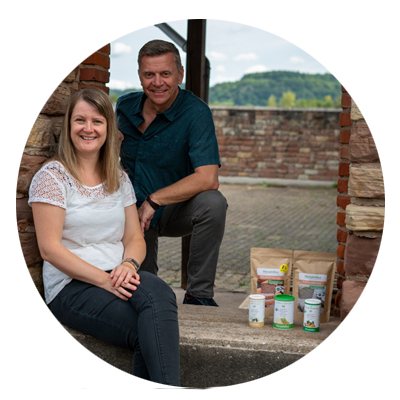
From those affected for those affected
We are Thomas and Michaela Zinser, founder of Histaminikus.
Because of the own histamine intolerance of Michaela and our son, we founded Histaminikus. The frustration does not find any suitable histamine food has spurred us to develop low -histamine food.
We would like to give you back a piece of quality of life. Feel free to look around with us.
Kind regards
Thomas and Michaela


